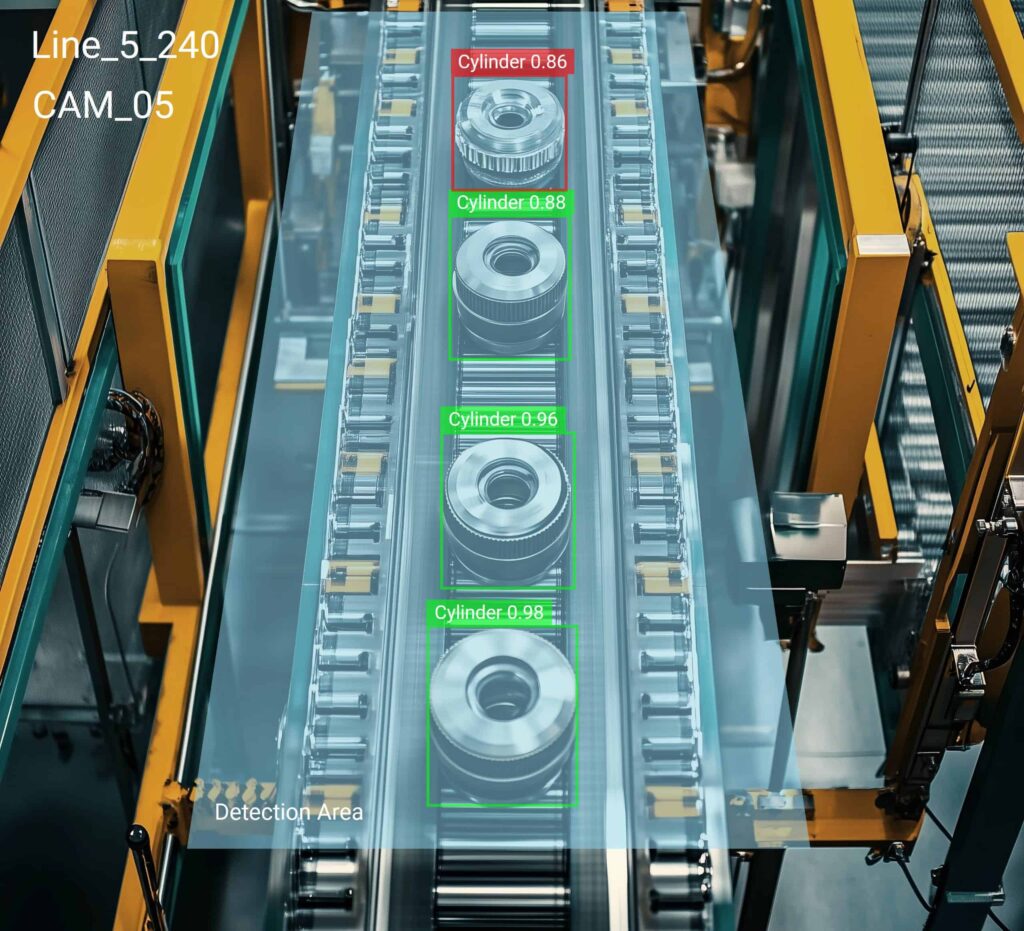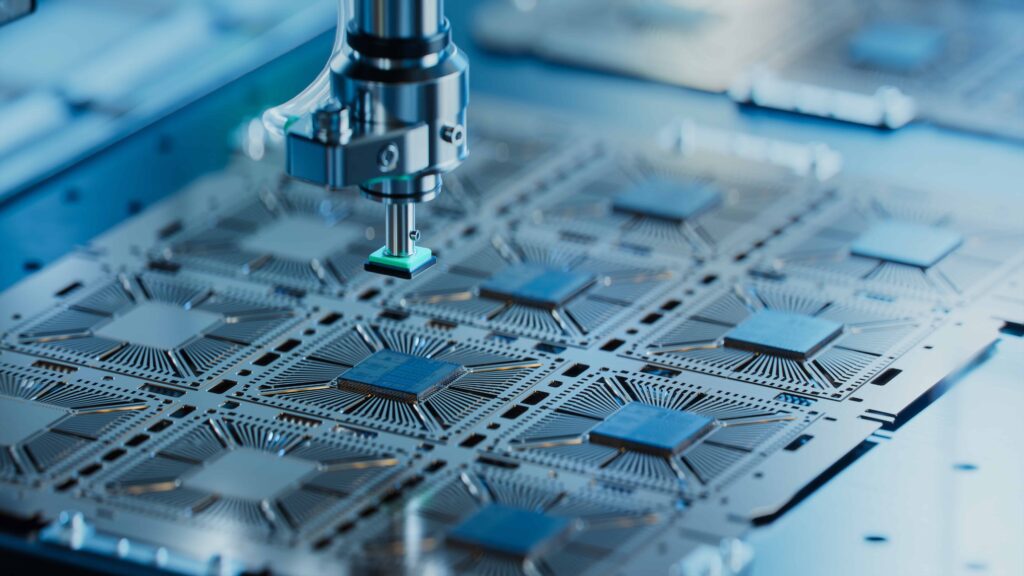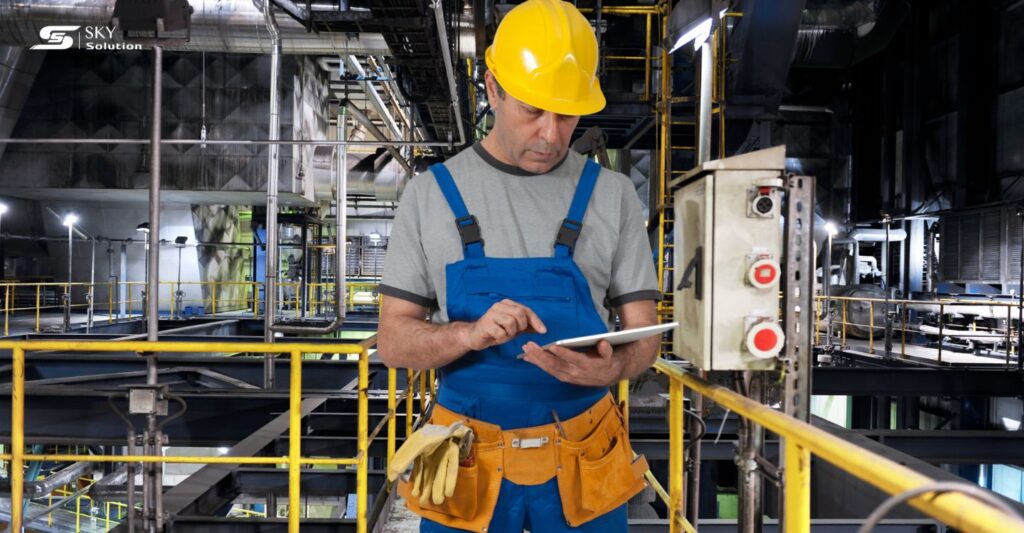In today’s fiercely competitive manufacturing environment, even the slightest defect can lead to costly product recalls, damage brand reputation, and erode customer trust. Traditional manual inspection methods can no longer keep up with the stringent quality demands of modern production lines. Join News Sky Solution to explore Error Proofing Manufacturing with Computer Vision – a revolutionary approach that’s transforming the way manufacturers detect, prevent, and eliminate defects across their operations.
Understanding Computer Vision Error Proofing in Manufacturing
What is Error-Proofing(Poka-Yoke) with Computer Vision
Error-proofing, traditionally known as Poka-Yoke in lean manufacturing, represents a systematic approach to preventing defects before they occur. When enhanced with artificial intelligence and computer vision technology, this concept evolves into a sophisticated system capable of real-time defect detection and automated quality assurance.
AI-powered error-proofing systems utilize advanced machine learning algorithms, deep neural networks, and computer vision techniques to continuously analyze visual data from production lines. These systems can identify anomalies, defects, and deviations from quality standards with microscopic precision, often detecting issues invisible to the human eye.
The integration of computer vision with error-proofing methodologies creates a proactive quality control environment where defects are identified and addressed immediately, preventing faulty products from advancing through the production process. This approach represents a fundamental shift from reactive quality control to predictive quality assurance.

The Importance of Error Proofing AI in Manufacturing
Manufacturing environments demand consistent, high-quality output at scale. Traditional manual inspection processes face significant limitations, including human fatigue, subjective evaluation criteria, and the inability to maintain consistent accuracy across extended production runs. These challenges become particularly pronounced in high-volume manufacturing, where thousands of products must be inspected daily.
Error-proofing AI addresses these critical manufacturing challenges by providing continuous, objective quality monitoring. The technology eliminates human error variables while maintaining consistent inspection standards regardless of production volume or time constraints. This consistency is crucial for manufacturers operating in regulated industries where quality compliance is mandatory.
Furthermore, early defect detection through AI-powered systems prevents the compounding costs associated with defective products progressing through multiple production stages. By catching errors at the source, manufacturers can minimize waste, reduce rework expenses, and maintain optimal resource utilization throughout their operations.
Why Computer Vision Outperforms Traditional Methods
Computer vision systems demonstrate superior performance compared to traditional inspection methods across multiple critical dimensions. Unlike human inspectors who may experience fatigue, distraction, or subjective judgment variations, computer vision systems maintain consistent accuracy levels throughout continuous operation.
The precision capabilities of modern computer vision systems are remarkable. These systems can detect defects at micron-level tolerances, identifying surface scratches, dimensional inaccuracies, color variations, and assembly misalignments that would be impossible for human inspectors to identify consistently. This level of precision is particularly valuable in industries requiring extremely tight quality tolerances, such as aerospace, automotive, and electronics manufacturing.
Speed represents another significant advantage of computer vision over traditional methods. AI-powered inspection systems can analyze thousands of products per minute, processing visual data in real-time without creating production bottlenecks. This capability enables manufacturers to implement 100% inspection protocols without compromising production throughput or efficiency.
Read more: AI in Manufacturing: 10 Practical Applications and Examples
How Computer Vision Enhances Error Proofing
Computer vision technology revolutionizes error-proofing through sophisticated image processing and machine learning capabilities. The process begins with high-resolution cameras capturing detailed images or video streams of products as they move through production lines. These imaging systems utilize advanced sensors capable of detecting variations in lighting, angle, and material properties to ensure consistent data quality.
The captured visual data undergoes preprocessing to optimize image quality and eliminate inconsistencies that could affect analysis accuracy. This preprocessing stage involves image enhancement, noise reduction, and standardization to create optimal conditions for defect detection algorithms.
Pattern recognition algorithms then analyze the processed images, comparing them against established quality standards and identifying deviations that indicate potential defects. These algorithms utilize deep learning models trained on extensive datasets of both acceptable and defective products, enabling them to recognize complex patterns and subtle anomalies.
Machine learning capabilities enable continuous improvement in defect detection accuracy. As the system processes more products and receives feedback on detection results, the algorithms adapt and refine their analysis capabilities, becoming increasingly sophisticated in identifying new defect types and reducing false positive rates.
The integration of computer vision with robotic systems enables an automated response to detected defects. When defects are identified, the system can automatically sort products, trigger alerts, or initiate corrective actions without human intervention, creating a fully automated quality control environment.
Types of Defects Detected in Error-Proofing Manufacturing with Computer Vision
Surface and Visual Defects
Computer vision excels at identifying surface-level defects that affect product appearance and functionality. Surface defects include scratches, dents, cracks, stains, and other cosmetic imperfections that can compromise product quality. These defects are particularly critical in consumer-facing products where appearance directly impacts customer satisfaction and brand perception.
Color and pattern defects represent another category of visual anomalies effectively detected by computer vision systems. Variations in color consistency, pattern alignment, or surface texture can indicate manufacturing process issues or material quality problems. Advanced colorimetric analysis capabilities enable these systems to detect even subtle color variations that might be imperceptible to human inspectors.
Contamination detection is crucial in industries such as food processing and pharmaceuticals, where foreign objects or substances can pose serious safety risks. Computer vision systems can identify contamination sources, ensuring product safety and preventing costly recalls that could damage brand reputation and consumer trust.

Dimensional and Assembly Errors
Dimensional accuracy is critical in manufacturing applications where precise measurements ensure proper fit and function. Computer vision systems can measure product dimensions with exceptional accuracy, identifying deviations from specified tolerances that could affect product performance. This capability is particularly valuable in automotive and aerospace applications where dimensional precision is essential for safety and functionality.
Assembly verification represents another crucial application of computer vision in error proofing. These systems can verify that all components are correctly positioned, properly aligned, and securely fastened during assembly processes. Missing components, incorrect orientations, or improper connections can be immediately identified and flagged for correction.
Error-proofing manufacturing with Computer Vision ensures that components maintain proper spatial relationships during assembly. Even minor misalignments can compromise product integrity and performance, making this capability essential for maintaining consistent quality standards across production runs.
Benefits of Implementing Error-Proofing AI in Manufacturing
Increased Accuracy
Computer vision systems deliver unprecedented accuracy in defect detection, often exceeding human inspection capabilities by significant margins. Nissan’s implementation of AI-powered visual inspection systems achieved 50% greater accuracy than human inspectors in detecting surface finish defects. This improved accuracy translates directly into higher product quality and reduced defect rates reaching customers.
The consistency of computer vision systems ensures that inspection standards remain constant regardless of external factors such as inspector fatigue, training variations, or subjective judgment differences. This consistency is particularly valuable in high-volume production environments where maintaining uniform quality standards across thousands of products is essential.
Continuous learning capabilities enable these systems to improve their accuracy over time. As they process more products and receive feedback on detection results, machine learning algorithms refine their analysis capabilities, becoming increasingly sophisticated in identifying new defect types and reducing false positive rates.
Scalability
Computer vision systems demonstrate exceptional scalability, easily adapting to different production lines, facilities, and manufacturing requirements. As production volumes increase or new product lines are introduced, these systems can expand their capabilities without requiring major infrastructure investments.
The modular nature of modern computer vision systems enables manufacturers to implement solutions incrementally, starting with critical production areas and expanding coverage as benefits are realized. This approach allows for manageable investment levels while building organizational expertise and confidence in the technology.
Integration capabilities with existing manufacturing equipment and enterprise systems ensure that computer vision solutions can be seamlessly incorporated into established production workflows without disrupting operations or requiring extensive system modifications.
Cost Efficiency
The economic benefits of computer vision error-proofing are substantial and multifaceted. Tesla’s implementation of AI-driven quality inspections achieved a 90% reduction in product defects, significantly reducing costs associated with rework, recalls, and customer dissatisfaction. These cost savings often justify the initial investment in computer vision technology within months of implementation.
Labor cost reductions represent another significant economic advantage. By automating visual inspections, manufacturers can redeploy human resources to higher-value activities while reducing the ongoing costs associated with manual quality control processes. This reallocation of human resources often leads to improved overall productivity and operational efficiency.
Early defect detection prevents the compounding costs associated with defective products from progressing through multiple production stages. By identifying issues at the source, manufacturers minimize waste, reduce rework expenses, and optimize resource utilization throughout their operations.
Sustainability
Computer vision error-proofing supports sustainable manufacturing practices by significantly reducing waste and optimizing resource utilization. Early defect detection prevents defective products from consuming additional materials and energy as they progress through production processes.
Improved accuracy in defect detection leads to reduced scrap rates and more efficient use of raw materials. This efficiency contributes to environmental sustainability goals while simultaneously reducing material costs and improving profitability.
The longevity and reliability of computer vision systems contribute to sustainable technology practices. These systems typically operate for many years with minimal maintenance requirements, providing consistent value while minimizing electronic waste and replacement needs.
Error-Proofing AI Challenges and Considerations
Implementing computer vision error-proofing systems presents several challenges that manufacturers must carefully address. Initial investment requirements can be substantial, particularly for high-quality cameras, sensors, and processing hardware needed to support sophisticated analysis capabilities. While long-term benefits typically justify these investments, the upfront costs can be challenging for smaller manufacturers with limited capital resources.
Data quality and training requirements represent another significant challenge. Computer vision systems require extensive datasets of both acceptable and defective products to train machine learning algorithms effectively. Developing these datasets can be time-consuming and expensive, particularly for manufacturers with limited historical defect data or complex product variations.
Lighting and environmental conditions can significantly impact system performance. Variations in ambient lighting, shadows, or reflective surfaces can affect image quality and analysis accuracy. Manufacturers must carefully design lighting systems and environmental controls to ensure consistent imaging conditions throughout production operations.
Integration complexity with existing manufacturing systems can present technical challenges. Legacy equipment may require modifications or upgrades to support computer vision integration, and ensuring seamless data flow between systems requires careful planning and technical expertise.

Future Trends in Computer Vision for Manufacturing
The future of computer vision in manufacturing is rapidly evolving toward real-time processing and edge computing capabilities. Edge computing enables critical analysis to occur directly on the production floor, reducing latency and improving response times for defect detection and correction. This approach minimizes dependence on cloud connectivity while enhancing system reliability and performance.
Zero-defect manufacturing represents the ultimate goal of computer vision error-proofing. Advanced predictive analytics and machine learning capabilities are moving the industry closer to this objective by enabling proactive defect prevention rather than reactive detection. These systems can identify process variations that may lead to defects before they occur, enabling preventive adjustments to maintain optimal quality.
Integration with digital twin technology is creating new possibilities for comprehensive quality management. Digital twins provide virtual representations of physical production systems, enabling simulation and optimization of quality control processes before implementation. This capability allows manufacturers to test and refine error-proofing strategies in virtual environments before deploying them in actual production.
Artificial intelligence advancement continues to enhance computer vision capabilities. Newer algorithms demonstrate improved accuracy, faster processing speeds, and better adaptability to varying production conditions. These improvements are making computer vision error-proofing accessible to a broader range of manufacturers and applications.
Conclusion
Computer vision error-proofing represents a transformative approach to manufacturing quality control, delivering unprecedented accuracy, efficiency, and cost savings. The technology’s ability to detect defects with microscopic precision while maintaining consistent performance across continuous operations makes it an essential tool for modern manufacturers seeking a competitive advantage.
Want to dive deeper into the world of Computer Vision? Explore more expert insights and latest innovations with us here.

